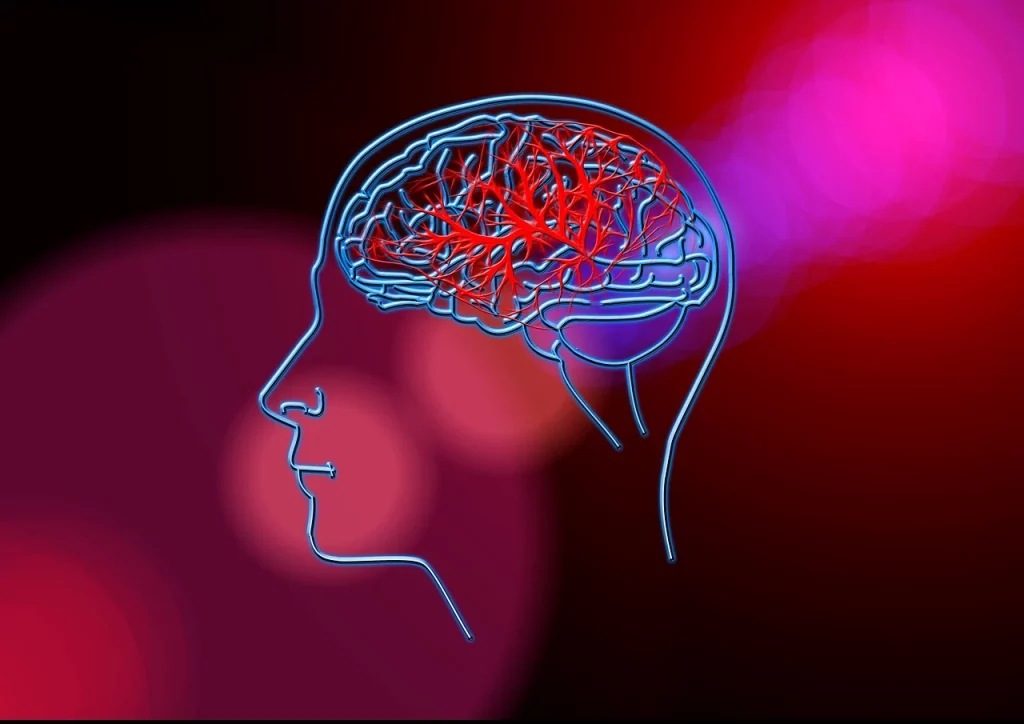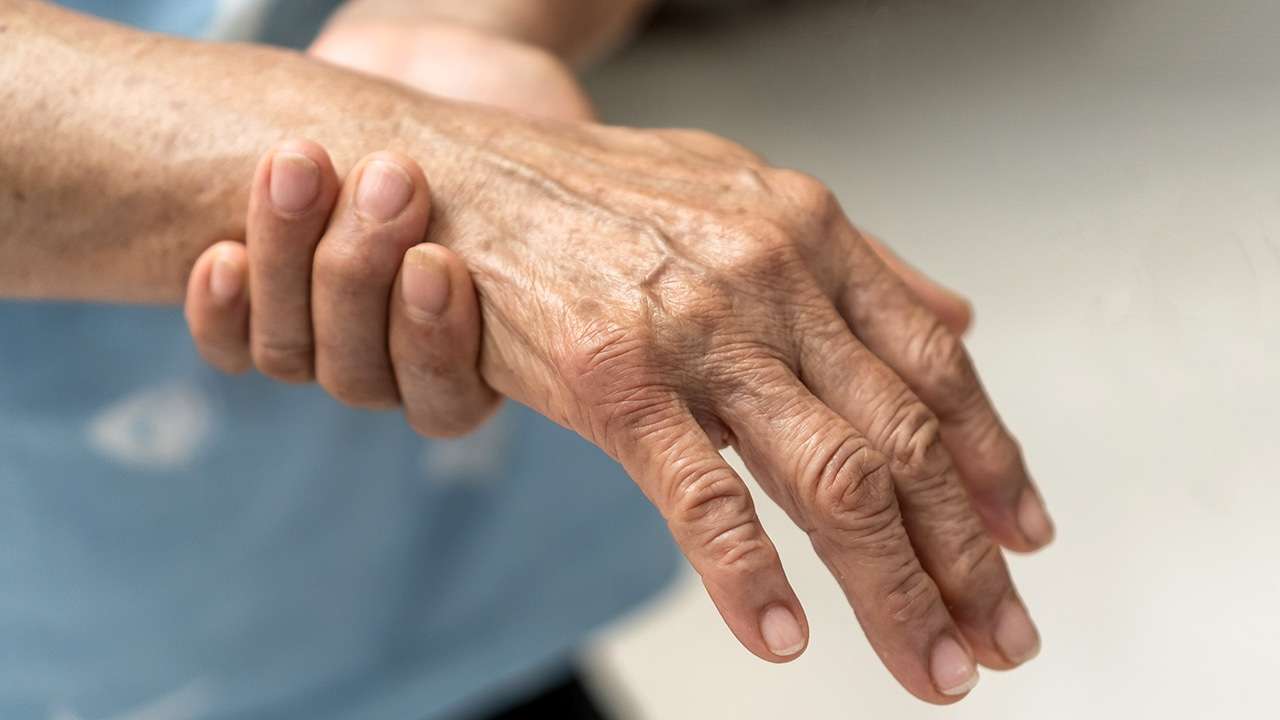What is Epilepsy and Seizures?
What is Epilepsy and Seizures?
Epilepsy and Seizures are neurological conditions affecting individuals of all ages, including children. These conditions can significantly impact the lives of children and their families, making it essential for parents, caregivers, and healthcare professionals to have a comprehensive understanding of their symptoms and available treatment approaches. In this blog, we will explore the world of epilepsy and seizures in children, with best neurologist in patna Dr Chandril Chugh exploring their symptoms and various treatment options.
Children are particularly susceptible to epilepsy and seizures due to the ongoing development of their brains. Seizures occur due to abnormal electrical activity in the brain, causing temporary disruptions in normal brain function. Epilepsy, on the other hand, is characterised by recurrent seizures. It is estimated that around 1% of children worldwide have epilepsy, making it one of this age group’s most common neurological disorders.
Recognising the symptoms associated with epilepsy and seizures in children is crucial for early identification and appropriate management. The symptoms can vary depending on the type of seizure a child experiences. It’s important to note that not all seizures involve convulsions or loss of consciousness. Common signs and symptoms include convulsions, loss of consciousness, changes in behaviour, staring spells, and temporary loss of skills or abilities.
Understanding Epilepsy and Seizures
Seizures occur due to abnormal electrical activity in the brain, resulting in temporary disruptions in normal brain function. Epilepsy is a neurological disorder characterised by recurrent seizures. In children, epilepsy often manifests during early childhood or adolescence. It is important to clearly understand epilepsy and seizures to recognise their symptoms and provide appropriate care for children affected by these conditions.
Seizures can be classified into two broad categories
Focal seizures, also known as partial seizures, occur when abnormal electrical activity is localised to a specific brain area. These seizures can manifest with or without loss of consciousness. The symptoms experienced during focal seizures can vary depending on the part of the brain affected. They may include sensory changes, motor movements, or alterations in perception or emotions.
Generalised seizures, on the other hand, involve abnormal electrical activity that spreads across the entire brain. These seizures often result in loss of consciousness and can be further classified into several subtypes. Absence seizures, also called petit mal seizures, are characterised by brief lapses in awareness, staring spells, and a temporary cessation of activity. Tonic-clonic seizures, formerly grand mal seizures, are the most well-known type of generalised seizure, featuring convulsions, loss of consciousness, and jerking movements.
In addition to these main types, there are other types of seizures that children can experience, such as atonic seizures (sudden loss of muscle tone), myoclonic seizures (brief muscle jerks), and tonic seizures (muscle stiffness). It is important to note that each child’s experience with seizures may vary and present with a combination of different seizure types.
Recognising the symptoms associated with seizures in children is crucial for early identification and appropriate management. It is important to be observant and seek medical attention if a child displays any signs of seizures, such as convulsions, staring spells, unresponsiveness, sudden changes in behaviour, or temporary loss of skills or abilities. Timely diagnosis and intervention can significantly impact the child’s quality of life and help manage the condition effectively.
Symptoms of Seizures
Seizure symptoms can vary depending on the type of seizure a child experiences. It’s important to note that not all seizures involve convulsions or loss of consciousness. Here are some common signs and symptoms:
Convulsions:
Convulsive seizures involve uncontrollable shaking and jerking movements. The child’s muscles may contract and relax rapidly, leading to twitching or convulsions of the arms, legs, or entire body. These convulsions can be intense and last for a few seconds to a few minutes.
Loss of Consciousness:
Some seizures can cause a child to lose consciousness, resulting in a blank stare or unresponsiveness. During these seizures, the child may appear “out of it” or unaware of their surroundings. They may not respond to stimuli or attempts to communicate.
Changes in Behavior:
Seizures may lead to sudden changes in behaviour, such as confusion, agitation, or aggression. A child experiencing a seizure might display unusual actions or emotions. They may become restless, anxious, or display aggressive behaviour without apparent cause. These changes in behaviour can be brief and may resolve once the seizure subsides.
Staring Spells:
Children may experience brief episodes of staring or daydreaming. These staring spells can be mistaken for inattentiveness or daydreaming but are a form of seizure activity. During these spells, the child may appear unresponsive, their eyes may be fixed, and they may not react to their surroundings.
Temporary Loss of Skills:
Seizures can cause temporary loss of skills or abilities, such as language regression or motor control difficulties. For example, a child who was previously able to speak may have difficulty forming words or sentences during or after a seizure. They may experience a temporary loss of coordination or have difficulty with fine motor skills.
It is important to note that the duration and intensity of seizures can vary. Some seizures may be brief and mild, while others can be more prolonged and severe. It is crucial to seek medical attention if a child displays any signs of seizures, as an accurate diagnosis and appropriate treatment are essential for managing their condition effectively.
Treatment Approaches for Epilepsy and Seizures
While there is currently no cure for epilepsy, several treatment approaches are available to help manage seizures effectively in children. The primary goal of treatment is to control seizures while minimising side effects and improving the child’s quality of life. Here are some common treatment options
Medication (Antiepileptic Drugs – AEDs)
Anti-seizure medications are the most common and effective treatment for epilepsy. These medications are prescribed based on the type of seizures a child experiences and their needs. The medications work by stabilising the electrical activity in the brain and reducing the likelihood of seizures. Working closely with a healthcare professional to find the right medication and dosage for the child is important. Regular monitoring is essential to assess the effectiveness of the medication and make any necessary adjustments.
Ketogenic Diet:
In some cases, a ketogenic diet may be recommended for children with epilepsy, especially those who do not respond well to medications or have specific seizures. The ketogenic diet is high in fats and low in carbohydrates, which promotes the production of ketones in the body. Ketones are believed to have anticonvulsant effects, helping to control seizures. This diet requires careful supervision and monitoring by a healthcare professional and a dietitian to ensure that the child receives proper nutrition while adhering to the specific dietary requirements.
Vagus Nerve Stimulation (VNS):
VNS is a non-drug treatment option involving the implantation of a vagus nerve stimulator device. This device delivers regular electrical impulses to the vagus nerve, sending these impulses to the brain. VNS helps to reduce the frequency and severity of seizures in some children with epilepsy. It is often considered when medications do not provide sufficient seizure control or have caused intolerable side effects. The device can be adjusted and programmed by a healthcare professional to meet the child’s specific needs.
Epilepsy Surgery:
In certain cases, when seizures are uncontrolled and originate from a specific, identifiable brain region, epilepsy surgery may be an option. The goal of epilepsy surgery aims to remove or modify the area of the brain responsible for generating seizures. The suitability for surgery is determined through comprehensive evaluation, including brain imaging, EEG monitoring, and other diagnostic tests. Epilepsy surgery is a complex procedure that requires expertise and should be performed by specialised healthcare professionals.
Responsive Neurostimulation (RNS)
Responsive neurostimulation is a newer treatment approach that involves implanting a device in the brain. This device detects and responds to abnormal electrical activity in real-time, delivering electrical stimulation to prevent seizures from occurring or to lessen their intensity. RNS is typically considered for children with focal seizures that are difficult to control with medications and may not be suitable candidates for surgery.
Conclusion
In conclusion, epilepsy and seizures can significantly impact the lives of children and their families. It is essential to be aware of the symptoms associated with seizures and to understand the available treatment options. If your child experiences seizures, seeking medical attention and consulting with a pediatric neurologist or epileptologist is important. They can provide an accurate diagnosis and develop an appropriate treatment plan tailored to your child’s needs.
Anxiety and Depression Symptoms and Treatment
Mental illness is a growing public health concern worldwide, including India. Due to its diverse population and unique socio-cultural challenges, India faces an intricate mental health landscape. This blog will examine the incidence, prevalence, symptoms and available treatments of mental illness in India in an attempt to shed light on an often ignored but extremely significant issue. Mental health disorders encompass an array of conditions which affect an individual's thoughts, emotions and behaviours in various ways.
Incidence and Prevalence:
- Mental illnesses, including anxiety and depression, profoundly affect individuals' well-being and daily functioning.
- Despite their widespread impact, social stigma, lack of awareness, and limited resources often lead to underdetection and undertreatment.
- Social stigma and misconceptions surrounding mental health contribute to underestimated prevalence estimates, hindering timely intervention and treatment.
Anxiety And Depression Symptoms
- Anxiety disorders, such as generalized anxiety disorder and social anxiety disorder, manifest as excessive worry, rapid heart rate, and restlessness, significantly impairing daily functioning.
- Depression, characterized by persistent sadness, changes in sleep and appetite patterns, and feelings of worthlessness, affects individuals across various age groups and backgrounds.
Depression is one of the most widespread mental health disorders in India and affects an enormous proportion of Indians across various age groups. Its symptoms include persistent sadness, loss of interest in activities previously enjoyed, sleeping disturbances and changes in appetite as well as feelings of worthlessness or guilt.
Keeping these symptoms under control may require professional assistance for proper diagnosis and Treatment Of Depression.
Anxiety Disorders
Anxiety disorders are unfortunately very prevalent in India, particularly generalized anxiety disorder, panic disorder and social anxiety disorder. People suffering from such conditions experience excessive worry, fear and physical symptoms like rapid heart rate, sweating, shortness of breath and restlessness - these conditions have an immense negative impact on daily functioning and quality of life requiring early intervention with appropriate treatments to ensure its continued existence.
Bipolar Disorder:
Bipolar disorder is characterised by extreme mood swings that oscillate between depressive and manic-hypomanic episodes, creating extreme emotional roller coasters for individuals suffering with it. They may experience elevated mood, energy, impulsive behavior, deep sadness and loss of interest - disrupting daily life and interpersonal relationships, necessitating comprehensive management and support services to manage them effectively.
Schizophrenia
Schizophrenia is a severe mental disorder, impacting an individual's thoughts, emotions, and behavior. People living with schizophrenia may experience hallucinations, delusions, disorganized thinking patterns, lack of motivation or initiative and many more symptoms that require long-term support to manage symptoms effectively and improve overall functioning. To effectively treat and support those living with this complex condition.
Understanding the incidence and prevalence of mental health disorders in India is critical for creating effective strategies and resources to tackle mental illness. By raising awareness, reducing stigma, and offering accessible mental healthcare services we can support individuals on their journey toward mental wellbeing while creating a healthier society overall.
Treatment of Anxiety and Depression:
Seeking professional assistance is critical when experiencing mental health disorders and substance use disorders. In India, various options exist to address both conditions simultaneously and promote recovery
Medication:
Psychiatrists may prescribe medications to manage symptoms and balance mood. Depending on your specific diagnosis, antidepressants, anti-anxiety drugs, mood stabilizers and antipsychotics may be used as part of treatment plans to address co-occurring mental health and substance use disorders; such medications can alleviate symptoms while simultaneously decreasing cravings and improving overall well-being.
Psychotherapy
Psychotherapy (or talk therapy) is an integral component of mental health and substance use disorders treatment, including cognitive-behavioral therapy (CBT), dialectical behavior therapy (DBT), and interpersonal therapy. Through therapy sessions such as these individuals are able to understand what factors may contribute to their conditions while creating healthy coping mechanisms and improving overall quality of life.
Support Groups
Support groups offer individuals a safe and nonjudgmental space in which to share their experiences, gain strength from others with similar challenges, and learn from those who have gone through similar trials. Peer support is an integral component of recovery as it fosters community spirit, reduces feelings of isolation, promotes accountability and binds together those suffering from dual diagnosis by creating a space to address both their mental health needs as well as substance use issues simultaneously. Support groups may especially be beneficial for people living with mental illness/substance abuse co-occurring simultaneously.
Lifestyle Modifications
Leading a healthy lifestyle is key in treating mental and substance use disorders, from regular physical exercise, getting enough restful sleep and eating properly to engaging in mindfulness practices like yoga or meditation rooted in ancient Indian traditions which can help individuals manage stress better while increasing self-awareness and improving mental wellbeing.
Addressing mental health and substance use disorders requires a holistic and integrated approach. To meet the unique needs of individuals with dual diagnosis, integrated care that addresses both their mental health symptoms and substance abuse concerns must be provided. Medication, psychotherapy, support groups, lifestyle modifications are effective tools for recovery; combined with medications or lifestyle modifications individuals can embark on their path of recovery and take back control over their lives. Providing accessible yet specialized treatment options will give people what they need to overcome challenges successfully and lead fulfilling lives.
Conclusion:
Mental illness is a significant problem in India, and understanding its incidence, prevalence, symptoms and available treatments is of critical importance. Raising awareness, combatting stigma and expanding access to quality mental healthcare services nationwide are necessary steps towards creating a healthier future where mental well-being and illness are treated with equal urgency as physical ailments. Seeking help shows strength; recovery is achievable with support and treatment from professionals.
6 signs that it’s time to consult a Best Neurologist
Neurological conditions can significantly impact one's quality of life. From headaches and chronic pain to more severe symptoms like memory loss and dizziness, it's crucial to recognize when it's time to seek the expertise of a neurologist. In this article, we will explore 6 signs that it’s time to consult a best neurologist and discuss how specialists can help diagnose and treat these conditions. At the Dr. Good Deed Clinic, renowned neurologist Dr. Chandril Chugh provides top-notch care for neurological disorders, offering patients the comprehensive support they need.
What Are Neurologists?
A neurologist is a medical professional specializing in diagnosing and treating conditions affecting the nervous system. This includes the brain, spinal cord, peripheral nerves, and muscles. Neurologists manage various disorders, from migraines and epilepsy to Parkinson's disease and dementia. They use various diagnostic tests and therapeutic approaches to help patients manage their symptoms and improve their quality of life.
Signs You Need to Consult a Neurologist
Recognizing the signs that indicate the need for a neurologist's expertise is crucial for timely diagnosis and appropriate treatment. Here are six common signs that it’s time to consult a best neurologist and how they can help.
Headache
Everyone experiences headaches occasionally, but certain characteristics can indicate a more serious issue. If you experience headaches frequently, especially if they are accompanied by symptoms like nausea, dizziness, or visual disturbances, it's essential to consult a neurologist. Persistent headaches could signal an underlying neurological condition that requires specialized treatment.
Chronic Pain
Chronic pain is a condition that lasts longer than the usual course of an injury or illness, often persisting for months or even years. It can stem from various sources, including nerve damage or disorders like fibromyalgia. If your chronic pain is accompanied by other symptoms such as numbness or weakness, it's time to see a neurologist. They can help identify the underlying cause and suggest appropriate treatment options.
Dizziness
Dizziness can manifest as vertigo—a sensation of spinning—or as disequilibrium, a feeling of unsteadiness. Both can be caused by neurological disorders affecting the brain's balance centers. If you experience frequent dizziness or have difficulty maintaining balance, a neurologist can diagnose the underlying issue and recommend treatments to alleviate your symptoms.
Numbness
Tingling or numbness can result from various causes, including simple issues like restricted blood flow or more serious conditions like neuropathy or stroke. If numbness occurs suddenly, persists, or affects one side of the body, it’s crucial to seek medical attention. A neurologist can determine the cause and provide treatment to prevent further complications.
Memory Problems or Confusion
While occasional forgetfulness can be normal, significant memory issues, confusion, or personality changes may indicate a neurological disorder. Conditions like Alzheimer's disease or other forms of dementia can impair cognitive function. A neurologist can perform tests to diagnose these conditions and develop a management plan to slow progression and improve quality of life.
Parkinson's Disease
Parkinson's disease is a progressive neurological disorder characterized by symptoms like tremors, stiffness, and slow movements. It primarily affects older adults and results from the loss of dopamine-producing brain cells. While there is no cure, early diagnosis by a neurologist can help manage symptoms through medication, therapy, and sometimes surgical interventions like deep brain stimulation.
Specialized Care at Dr. Good Deed Clinic
At Dr. Good Deed Clinic, Dr. Chandril Chugh and his team provide specialized care for a range of neurological conditions. With support from neuroradiology, neurosurgery, intensive care, and pathology departments, they offer comprehensive treatment plans tailored to each patient's needs. For acute stroke patients, the clinic provides thrombolysis treatment, while those with spastic disorders can receive Botox therapy. The clinic also offers diagnostic tests like neostigmine testing for conditions such as myasthenia gravis.
Additional Resources
For more information on why regular neurological check-ups are essential, visit 10 Reasons To See A Neurologist Regularly. This resource provides valuable insights into maintaining neurological health and the importance of preventive care.
Conclusion
If you experience any of the symptoms mentioned earlier or have been diagnosed with a neurological condition, don't hesitate to schedule an appointment with a neurologist. The dedicated team at Dr. Good Deed Clinic is well-equipped to provide expert diagnosis and treatment, ensuring you receive the highest level of care.
FAQs
What symptoms should prompt a visit to a neurologist?
Symptoms such as persistent headaches, chronic pain, dizziness, numbness, memory problems, and signs of Parkinson's disease should prompt a consultation with a neurologist.
How does a neurologist diagnose neurological conditions?
Neurologists use a combination of patient history, physical examinations, and diagnostic tests like MRI, CT scans, and EEGs to diagnose neurological conditions.
Can chronic headaches be a sign of a serious neurological disorder?
Yes, chronic headaches can indicate serious conditions like migraines, cluster headaches, or even brain tumors, and should be evaluated by a neurologist.
What is the role of a neurologist in treating Parkinson's disease?
Neurologists diagnose and manage Parkinson's disease, recommending treatments like medication, physical therapy, and sometimes surgical options like deep brain stimulation.
Is numbness always a neurological issue?
Not always, but persistent or sudden numbness can indicate a neurological issue such as neuropathy, stroke, or multiple sclerosis, requiring evaluation by a neurologist.
What treatments are available for chronic pain from a neurological perspective?
Treatment options include medications, physical therapy, nerve blocks, and other interventional procedures depending on the underlying cause of the pain.
What Should You Do If Someone Is Having a Seizure?
In simple terms, a seizure is an uncontrolled electronic disturbance in the brain that can cause changes in your behaviour, movement, or feelings, and in levels of consciousness. If someone has 2 or more seizures that are 24 hours apart, at least, for unidentifiable reasons can be epilepsy. A seizure is caused due to various reasons like organ failure, a certain type of medication, electrolyte imbalance, hypersensitive encephalopathy, medical withdrawal. Factors that lead to a seizure or how often a seizure occurs or why it occurs at a particular time can be difficult to determine.
When we talk about general first aid for seizures, always remember to keep the patient comfortable and safe.
- Never leave the person alone until the seizure is over: Seizures are unpredictable in nature; one can get injured as well, or get unconscious, so not leaving the person alone is of utmost importance.
- Observe how long the seizure lasts: Be sure to observe how long the person takes to return to normal after the seizure.Consult a professional if the seizure lasts longer than usual for that person.
- Stay calm: Remember to stay calm as the person going through it will also feel better and most seizures only last for minutes.
- You can prevent injury by keeping objects out of the way: Keep all the sharp objects away if the person is at home or if he is at a public place keep away from a moving vehicle as it can be dangerous.
- Make sure that the person is breathing fine: If the person is lying, turn him to the other side with his mouth towards the ground so that he can breathe and saliva doesn’t block the airway.
- Never give the person anything to eat or drink until he is fully alert: A person during a seizure should not eat or drink as it can make him choke, so never put food or any pills while they are not aware.
EMERGENCY SEIZURE MEDICATION FOR CHILDREN
Treating a child with a severe seizure can be difficult in an emergency room because the seizures make him move a lot which in turn makes it difficult to undress him or give him an IV (intravenous drugs). So, a better option would be to give him drugs via the mouth and not rectally. A rectally given valium stops seizures within minutes especially when IV is not an option. Oral use of Midazolam can reduce further complications and lower the risk of death. Seizure symptoms among children can be lateralized tongue biting, the flickering of eyelids, dilated pupils with a blank stare, lip-smacking, increased heart rate, blood pressure, and post-ictal phase.
COMMON SEIZURE SYMPTOMS
- Odd feelings, they are indescribable
- Unusual tastes and feelings, unusual experiences like feeling detached, out-of-body sensations and the body look or feels different
- Feeling confused
- Memory Lapses
- Episodes of daydreaming
- Jerking movement of arm, body, or leg
- Falling
- Headache
- Tingling, numbness, or feeling of electricity in different parts of the body
- Unexplained sleepiness, weakness, or confusion
- Losing control of urine or stool unexpectedly
SEIZURE TREATMENT GUIDELINES
- Put on gloves, if possible
- Place something soft under the person’s head so that he cannot bang his head against the ground
- Do not place anything in the person’s mouth
- Loosen tight clothing, especially around the person’s neck
- Do not try to restrain the person or use force on him
- Call for an ambulance if the person stops breathing, if the seizure lasts more than 5 minutes, there are multiple seizures happening without the person regaining consciousness, if pupils are not equal in size after the seizure, if the person is injured, if the seizure occurs underwater.
When it comes to seizure treatment at home, avoid clutter, as it can be dangerous for even the people living there.
If you want to prevent seizures, you should know your triggers. The most common triggers are stress, anxiety or emotional issues, alcohol or drug abuse, and even the process of quitting them can cause seizures. Sleep deprivation and the exhaustion from it, change in medication or skipping a dose of anti-seizure drugs, something that over stimulates your senses like flashlights, working on a computer for long hours, hormonal changes in women, pregnancy or menstruation, and mental strain can be potential triggers. If you take notice of these changes, you can surely prevent a seizure.
Having a healthy diet, reducing your screen time, and sleeping well can take you a long way.
Treatment options for seizures are following a ketogenic diet, brain surgery, putting a vagus nerve stimulator in the chest. If you have had a seizure even just once, you are at risk of other episodes as well. You will have to work with your doctor and take some medications, make some lifestyle changes, and other preventive steps. When it comes to the seizure management protocol, ventilation is one thing that you should look into. To provide privacy to a person, during and after the seizure, timing the seizure is of utmost importance. Protecting from injury should also be a priority as we mentioned earlier. Remember that panicking is not an option.
If you are thinking about who to consult, consider Dr. Chandril Chugh who is an American-trained Stroke and Aneurysm Specialist. He is a gold medalist in MBBS and believes that a doctor’s job is not only to heal but to spread awareness as well. You can easily book an online consultation session. Talk to us about your disease and get your life back.
5 Ways to Help a Loved One Diagnosed with Multiple Sclerosis
Introduction
People generally have a similar reaction when a loved one is diagnosed with multiple sclerosis. What does this mean? How do I cope?
Multiple sclerosis is a chronic disease handicapping the central nervous system (including the cerebrum, optic nerves, and spinal line). Multi-zone scarring is a sign of multiple sclerosis. In Multiple Sclerosis, the immune framework goes after the myelin sheath that covers nerve filaments and causes correspondence issues between the human cerebrum and the rest of the human body. Myelin permits the nerves to direct electrical signals rapidly and productively. Myelin sheaths that deteriorate or weaken in multiple places can leave scars or sclerosis behind. Specialists call these regions lesions. As these areas of spots multiply, there are major to never fibres due to which the patient's body can not carry out certain functions.
In the long run, the infection can cause long-lasting harm or deterioration of the nerves. Patients with Multiple Sclerosis can lose their ability to walk independently or even at all.
This illness is more often diagnosed in females than in males. Globally, the National MS Society reports more than two million patients suffering from the disease.
Even though it tends to be hard to take in right away that your loved one or someone close to you has been diagnosed with Multiple Sclerosis, you are their caretaker and have to make them realize they should continue living their life to the fullest.
As of now, there is no proven remedy for Multiple Sclerosis.
There are no particular tests for multiple sclerosis diagnosis. Diagnostic tools like spinal taps, MRIs, multiple sclerosis blood tests, or evoked potentials are often used instead.
5 ways to multiple sclerosis patient care
1. Understand that there is a great deal of vulnerability with Multiple Sclerosis
As a caregiver, you have this unpredictable illness that may affect different patients. One day your loved one who has multiple sclerosis will feel fine, and the next day, they might have various complications. The vital factor in beating this is arranging, laying out schedules, planning, and having the capacity and eagerness to be adaptable as a guardian. Even when it comes to multiple sclerosis causes and symptoms, specialists say that never make assumptions that what you read or hear about numerous sclerosis patients will also be the case for your loved ones.
2. Be consistent with your treatment.
As a general rule, the best methodology is to treat any individual with a physical, neurologic issue as a solid and free individual equipped for navigation and taking care of oneself. Doing as such for your adored one to be freer is excellent for both of you. You might have to research gears like a ramp and wheelchair. A physical advisor can come to your place to recommend explicit changes. Design your house so that it becomes easy for them to get around. In this way, they will continue to serve in the role of confidant and socially active.
3. Keep yourself updated about the disease.
Few of the symptoms are easily visible, while other changes might be felt exclusively by the individual encountering multiple sclerosis. Therefore, listening to multiple sclerosis patient stories is necessary to educate yourself about the illness. Frequently ask your loved one who has multiple sclerosis about what they are going through and what all they wish that people taking care of them might be aware of the illness. It might be impossible for you to know the exact thing somebody with multiple sclerosis is going through. However, putting forth the attempt to attempt can have an enormous effect. Also, read articles and listen to the caregivers of other multiple sclerosis patients as they are experienced.
4. Assist them with the ordinary routine stuff.
It becomes a big challenge for patients with multiple sclerosis to do basic routine stuff like strolling, utilizing the restroom, cooking, and cleaning. Most Multiple sclerosis patients can facilitate care; however, they may eventually need assistance with transportation and household upkeep. Contingent upon your loved one's Multiple Sclerosis stages, you might need to assist with fundamental considerations like dressing them up, cooking and helping them to feed, toileting, and cleaning them from time to time. In the early stages, your loved ones might not require your assistance, but the gesture will significantly affect them. Keep them in the loop, so they know you are available if they need you in the future.
5. Always try to be adaptable and understanding.
Individuals with Multiple Sclerosis have great days and awful days, and these might even change in the middle of the day. The patients might even feel exhausted after a deep eight-hour sleep. Realizing that weariness can make it challenging for somebody you love to participate in exercises you had arranged, try to be OK if they drop on you.
Multiple Sclerosis patient care always requires being ready with a plan B if a terrible day happens.
Dr. Chandril Chugh is one of the most popular US-trained Neurologists. He has 16 years of experience in this field. He was the head of the Department of Interventional Neurology at Max Hospital, Saket, and is a prime supporter of Dr. Good Deed. He is also a member of AAN & SCCM. He is popularly known for his kindness and excellent assistance demeanor among his patients. Besides the fact that he takes incredible thought of his patient's wellness, additionally, he is awesome to talk with at each gathering.
Conclusion
When you're a caregiver, it's critical to deal with yourself. Work out consistently, eat well, and get a decent night's rest. Keep track of your and your loved one's medical care. Always be understanding and cooperative with them, and ensure that you are always with them whenever they need assistance. Have conversations with other caregivers to gain knowledge on the illness. Your help and care are the best treatment for your loved person with multiple sclerosis.
Having Children After a Multiple Sclerosis Diagnosis
Introduction to Multiple Sclerosis
A person suffering from Multiple Sclerosis experiences damage to the central nervous system by affecting the nerves located in the brain and spinal cord. Multiple Sclerosis is a chronic and handicapping sickness that generally begins in youthful adulthood and is twice as typical in females than males. This illness happens when the immune system assaults nerve strands and myelin sheathing. This assault causes aggravation, which annihilates nerve cell cycles and myelin.
Multiple Sclerosis is a deep-rooted infection, generally advancing to genuine and long-lasting incapacity, even though it can incidentally have just gentle side effects. Moreover, multiple Sclerosis is erratic and can go from harmless to handicapping.
Multiple sclerosis life expectancies of approximately twenty-five to thirty-five years after the finding of Multiple sclerosis is observed.
The disease is more common in countries of the Northern hemisphere.
Multiple sclerosis causes
A wide range of causes can lead to Multiple Sclerosis, including viruses, autoimmune disorders, environmental elements, and hereditary variables. Each of the potential causes shares the common component of the body's immune system going after sensory tissue. Myelin protects the electrical signs the sensory system uses to transmit. When obliterated, communication will have interference and delay. Specific sensory systems may be damaged permanently.
Multiple sclerosis symptoms and diagnosis
Different symptoms and signs of multiple sclerosis may arise based on where the affected nerve fibers are located and how far the disease progresses. They might be depending upon the sensory system impacted. They show up in different mixes, might include problems like Judgment, Consideration, Memory, and Focus. To determine how multiple sclerosis affects the body in general, the following points should be noted:-
- Exhaustion
- Wooziness
- Issue with coordination
- Paralysis
- Obscured vision or twofold vision, etc.
You should seek medical attention if you notice any of the symptoms listed above. You may be advised to consult a neurologist or healthcare provider for a diagnosis. Multiple sclerosis cannot be diagnosed with a specific test. Instead, a differential diagnosis is used to analyze the disease. The medical services supplier will do a careful clinical history and an actual test as the initial moves toward finding Multiple Sclerosis. The neurologist may suggest you go to certain tests like MRI, lumbar puncture, blood tests, etc to know more about the spread of illness.
Multiple sclerosis treatment
Multiple sclerosis does not have a cure. However, treatment options can slow its progression and provide benefits. Additionally, you can get treatment to manage symptoms, deal with flare-ups or relapses, improve your safety and function. Restoration treatments, including active recovery, muscle relaxants, occupational treatment, discourse and gulping help, mental treatment, or assistive gadgets like supports, may likewise be helpful. Corticosteroids and plasmapheresis are considered treatments for Multiple sclerosis attacks.
Multiple sclerosis and pregnancy
Luckily, there is no appearance of speeding up the course or worsening the effects of Multiple Sclerosis in pregnancy. From a few pieces of research, doctors have observed that Multiple Sclerosis side effects decline in pregnancy. However, the impacts of the illness might make it physically challenging to convey a pregnancy. MS and pregnancy fatigue, weakness, and coordination issues may increase the probability of falls. Parents will need to closely monitor the mother's infection to the disease and the fetus's health during this period. If a mother has unrecognized Multiple Sclerosis, there are high chances of her being diagnosed with MS after pregnancy as during pregnancy be more likely to start having symptoms.
Issues that a woman with MS will have over one with not are:-
- Small-for-gestational-age baby.
- Difficulty in pushing out the baby during labor and birth.
- Mosty to give a cesarean birth.
Doctors have observed that women with Multiple Sclerosis mostly have c section delivery. Some theories suggest that labor is delayed due to muscle problems.
No settled treatment modifies the direction of multiple sclerosis. In any case, you might be given medications like steroids and anti-inflammatory medicines. So do consult your neurologists for more information. Pregnant women who have multiple sclerosis may need to undergo rehabilitation programs. This will depend on the symptoms of the mother. Some of them are listed below for your help:-
- Keeping up your freedom
- Restoring coordinated abilities
- Utilizing assistive gadgets
- Socializing
- Setting a suitable activity program to advance muscle strength, perseverance, and control.
- Overseeing bladder incontinence
- Getting mental retraining
- Adjusting the home climate for security and ease of use
- Getting friends and family involvement.
Dr. Chandril Chugh has been in the Neurology field for sixteen long years and is regarded as one of the top US-trained Neurologists. He was the head of the Department of Interventional Neurology at Max Hospital, Saket, and is one of Dr. Good Deed's most vocal supporters. He is also elected to be a member of SCCM & AAN. His kindness and excellent assistance demeanor make him popular among his patients. Furthermore, he is lovely to converse with at every meeting since he listens to his patient's problems. Dr. Chandril Chugh completed his MBBS and won a gold medal. His vision is to assist people improving their lives and, bit by bit arise as thought forerunners in the field of the health board.
Conclusion
According to research, women with multiple sclerosis do not have a significantly different rate of birth defects from those without numerous sclerosis in pregnancy, delivery, and conceiving. The only problem comes during labor, as the mother might not have pelvic sensation and may not feel torment with contractions. This may likewise make it difficult to tell when work begins. The side effects of MS might be dispatched for quite a while. Pregnant women with MS should inform their doctor as soon as possible for timely diagnosis and treatment. Getting the proper clinical consideration can lead to having a healthy pregnancy and a sound child if the mother has Multiple Sclerosis.
Is It Important To Take a Second Opinion Before Spinal Surgery?
When do you need to undergo spinal surgery? Is undergoing one necessary? Dr. Chandril Chugh, American trained stroke and Aneurysm Specialist discusses all the factors that come up in all our minds.
REASONS FOR SPINAL SURGERY
If a patient comes up with lower back or neck pain, we observe him for a while and suggest maintaining physical activity, in case it resolves on its own. If the pain does not resolve on its own, you should see a doctor for further evaluation.
Spinal problems can also be treated in a non-surgical way as well. Options like physical therapy, exercises, medication, and sometimes spinal injections are also recommended before surgery is resorted to. If a patient is not responding to non-surgical options and still experiencing a lot of pain then, we recommend surgery, especially for those who go through a weakness in limbs due to spinal cord or nerve root compression.
TYPES OF SPINAL SURGERY
Lumbar Decompression Surgery for Spinal Stenosis: Lumbar decompression surgery, also known as, lumbar laminectomy, is performed to correct the narrowing of the spinal canal, called spinal stenosis. The surgeon removes the lamina in the spine that is causing pain.
A lumbar discectomy involves removing an injured disc in the lower back. An arthroscopic discectomy and an open spine surgery are both types of lumbar discectomy. Open spine surgery is more common.
Herniated Disc Surgery : In herniated disc surgery, the surgeon removes an injured part of the disc. In order to stop the pain from the disc, the surgeon may remove the disc and fuse the vertebrae together. Take the decision after getting a second opinion since spinal fusion makes it difficult to move the part that was operated on. The second opinion doesn’t hurt, ever.
Spinal Fusion Surgery: As discussed above, it involves fusing two adjacent vertebrae together to avoid pain caused due to their movement against each other. The surgeon uses small screws and rods to fuse the vertebrae and then leave them to naturally heal and fuse. The surgeon can also use a bone graft from another part of the body to help the vertebrae to fuse.
RECOVERY TIME
Recovery after discectomy is usually quicker, although you may feel numbness, pain, or weakness around the affected area.
When it comes to fusion surgery, it may take longer. It will take 3 to 4 months at least for the bones to recover and the process of healing will go on for a year. The length of surgery also depends upon your condition before surgery.
RISKS ASSOCIATED WITH SPINAL SURGERY
Anaesthesia risks: Spine surgeries are usually performed under general anaesthesia, intravenously to avoid pain during the surgery. Risks are rare but serious like death, heart attack, stroke, and brain damage. Complications may be caused because of other medical conditions. Please tell the medical team about tobacco use or if you or your other family members have ever had a reaction to anaesthesia.
Bleeding: The surgeon employs techniques that minimise blood loss however, blood loss can still happen.
Blood clots: After the surgery, the body’s clotting mechanism is super active to stop the bleeding caused by the surgery. Injury to the blood vessels around the affected site can cause clotting. Clots can occur during the first few weeks of surgery. Signs of a blood clot include swelling, tenderness or redness, and pain.
Dural tear: It occurs when the thin protective covering around the spinal cord gets torn during the procedure. Most dural tears heal without incident. In case, the tear doesn’t heal the spinal fluid can leak out through the tear and can cause a spinal headache. If you feel a headache after surgery, tell your surgeon, chances are you might need a second surgery.
Infection: The risk of infection after surgery is small. If the infection develops it is superficial, but it can spread to the deeper areas around the spinal cord and vertebrae. Common symptoms of infection include a red hot and swollen wound, pain, fever and chills, clear liquid or yellow pus coming out from the cut, a foul smell coming out from the wound site. Go to your doctor if you notice any of these symptoms.
TAKE SECOND OPINION
The complications mentioned are rare but still, you should ask the surgeon about the risks associated with the surgery. In fact, take a second opinion as well. Knowing the risks beforehand allows you to weigh the pros and cons of whether undergoing surgery would be right for you. Taking a second opinion is best when the first surgeon wants a confirmatory opinion before going for the second surgery. When this is the case, let the surgeon choose the surgeon as he would choose the one whose opinion he would value the most. If the surgeon is unable to explain to you why you need surgery, his explanation seems vague or your personal goals don’t match, when it comes to the treatment, you should surely take a second opinion. Taking a second opinion is important when the first surgery did not work and the doctor is recommending another one. If the first surgery is not beneficial, then the second one would be helpful in very specific circumstances.
Online second opinion services are also an option especially when the doctor you want to consult is at a distance. The doctors look at your X-ray scan, MRI reports and then provide a second opinion. But there is one drawback, they do not get to evaluate you and your condition in person.
HOW TO CHOOSE A SPINE SURGEON
- The surgeon should enlighten you about the pros and cons of undergoing surgery, and educate you about the process. He should describe to you what is technically possible about the potential benefits.
- Patients often ask about whether the orthopaedic surgeon or neurosurgeon should do their surgery. Each specialty has a different focus in training although both are equally trained to do the surgery. The orthopaedic surgeons are better suited for deformity and neurosurgeons are better in handling tumour cases. Both of these surgeons often work together in the operating room. Your surgeon should be board certified in orthopaedic surgery or neurosurgery.
- Last but not least, the number of years of experience that the surgeon has in the field of spinal surgery. A surgeon more experienced is going to have a way better technique while handling such a case than the one who does a spinal surgery occasionally.
In a nutshell, never ignore the symptoms and never avoid taking a second opinion.
Decoding Brain Strokes: Essential Insights Causes, symptoms and Prevention
To put it in simple terms, when the supply of blood to our brain is interrupted it’s called a brain stroke. Rupture of a blood vessel in the brain can also cause a stroke.
There are three types of brain stroke and their causes:
1. Transient ischemic attack (TIA): When there is a blood clot that usually reverses by itself.
This category is further classified into the following types:
- Embolic
- Thrombotic
- Inflammatory
Treatment and the recovery process vary with the type. A blood clot causes a TIA and serves as a warning that a full-fledged stroke is a possibility.
2. Ischemic Stroke: It is caused by a blockage, by a plaque or clot in the artery. It is more dangerous than TIA because it has a tendency to become permanent.
There are two types of blockages that can be caused due to this type of stroke:
Cerebral Embolism and Cerebral Thrombosis
- Cerebral Embolism: This condition occurs when a blood clot forms elsewhere in the body, such as in the chest or neck.
- Cerebral Thrombosis is when a blood clot is formed at the fatty plaque within the blood vessel.
3. Hemorrhagic Stroke: It’s the one in which the blood vessel leaks or bursts and gets into the brain.
Hemorrhage is of two types: Intracerebral and Subarachnoid.
- Intra cerebral Hemorrhagic Stroke: It occurs when the tissues around the brain get filled with blood due to the bursting of an artery.
- Subarachnoid Hemorrhagic Stroke: It causes bleeding in the area around the brain and the tissues covering the brain.
Men and women have separate reasons for a brain stroke, genetics being a common cause among both the sexes.
 Causes of stroke among women
Causes of stroke among women
As compared to men, women are at a higher risk of having a brain stroke.
When you have a migraine with difficulty in focusing, it is a sign that it can become serious. Usage of contraceptive pills can also be a reason. Smoking, obesity, some specific type of oral contraceptive pills can cause a brain stroke. Higher blood pressure can also cause brain stroke. Women are at a higher risk of having a brain stroke during pregnancy due to hormonal changes and sometimes high blood pressure.
The risk of a brain stroke is especially higher during the third trimester and three months after giving birth.
Causes of Stroke in Men
Ischemic stroke is quite common among men. Just like women, high blood pressure can also cause brain stroke among men. Smoking can easily cause brain stroke and we all know more men are smokers than women. Smoking makes the blood thicker and increases the build-up of plaque in the artery. Being obese can also be a cause of brain stroke. Diabetes is also capable of damaging our blood vessels and eventually a stroke. Too much drinking can also be a reason for stroke as too much drinking can increase blood pressure.
Symptoms of brain stroke
If you notice any of the symptoms in someone that we’re going to discuss, please take medical help.
- If the person is not speaking clearly and experiencing difficulty in understanding what others are saying, it is a sign. Please do not ignore it.
- Another symptom of paralysis is paralysis of the face, arms, or legs. There might be weakness or numbness. Especially on either the right or the left side of one’s body. Tell the person to raise both hands together, if one of them falls, it can be a stroke. If the person is smiling, one side of the mouth may droop as well.
- Difficult vision is also a sign. The person might feel that his vision is blurred or blackened even in one eye or both of them or the person might see double.
- A severe headache is also a sign, which is followed by vomiting, dizziness, or lack of control over the senses.
- Lack of coordination of muscles while walking is another sign.
How to prevent brain stroke?
- Maintain a healthy weight: If you are on the heavier side, check your Body Mass Index, if you are in the obese or overweight category, it’s not a good sign.
- Work out: Working out, be it weight lifting, dancing, yoga, or aerobics, all lead to the same destination, better health overall. Working out keeps your blood sugar levels and cholesterol level under control, which makes it a very necessary part of our lifestyle.
- Healthy diet and nutrition: Make your health a priority, avoid junk food and eat nutrient-rich food. It’ll take you a long way.
- No tobacco: Do not smoke, use a nicotine patch to curb the craving to lead a healthy life and if still can’t quit smoking try therapy, do all things in you to quit smoking.
- No heavy drinking: Avoid making alcohol a habit.
- Treat your diabetes: Having diabetes for too long makes the formation of clots more likely in the blood vessels. So, keep your blood sugar levels in check.
- Treat Atrial Fibrillation: It happens when irregular heartbeat causes clots to form and then they travel to the brain and eventually cause brain stroke. It has a fivefold risk of causing a brain stroke. If you have heart palpitations or shortness of breath, it can be a sign, take help.
- Trust your body: Whenever you see any of the symptoms like blurred or blackened vision, paralysis or numbness, lack of coordination, do not question whether it is all real, just go with your instinct. A lot of people ignore the signs, do not do that, trust your instincts. Please take professional help.
Foods that can help in preventing a stroke
- Fruits and vegetables: When buying them go for deep reds, oranges, yellows, blues, purples, and greens.
- Fresh and whole-food: Have fresh food and stay away from packaged food as much as possible. Nothing good can come out of a packet.
- Salt-free spices: Excessively salty food can be a cause of high blood pressure so try including salt-free spices in your food like turmeric, black pepper cumin, and paprika.
- Water: Drink lots of water to keep yourself hydrated at all times.
Remember, “prevention is better than cure”.
Hydrocephalus Symptoms and Treatment Options
Hydrocephalus is a condition where cerebrospinal fluid (CSF) builds up in the brain, leading to the enlargement of spaces called ventricles. This fluid buildup puts pressure on the brain, causing various symptoms that can significantly impact brain function. Normally, CSF flows through the ventricles, cushioning the brain and spinal cord. When this flow is disrupted, it leads to hydrocephalus, a serious condition that requires prompt attention.
What Is Hydrocephalus?
Hydrocephalus can develop at any age, but it is more common in infants and older adults. In adults, hydrocephalus symptoms can include chronic headaches, blurred or double vision, balance difficulties, mental confusion, and incontinence. Infants, on the other hand, may exhibit signs such as an unusually large head size or irritability.
Hydrocephalus is managed by restoring and maintaining normal levels of cerebrospinal fluid, typically through medical or surgical treatments. For more in-depth information, refer to What Is Hydrocephalus.
Types of Hydrocephalus
Understanding the different types of hydrocephalus can help in identifying the most appropriate treatment. There are three primary types:
- Communicating Hydrocephalus: Also known as non-obstructive hydrocephalus, this type occurs when the flow of cerebrospinal fluid is blocked after it leaves the ventricles.
- Non-Communicating Hydrocephalus: Also known as obstructive hydrocephalus, it occurs when there is a blockage that prevents the CSF from flowing through the brain's ventricles.
- Normal Pressure Hydrocephalus (NPH): This common type occurs gradually as the CSF accumulates over time, often affecting older adults.
Causes of Hydrocephalus
Hydrocephalus can occur due to various reasons, and it’s particularly common in infants. The condition arises from an imbalance between the production of cerebrospinal fluid and its absorption into the bloodstream. This imbalance increases the pressure in the brain, potentially damaging brain tissues.
Common causes include:
- Blockages: Prevents cerebrospinal fluid from flowing normally, which is the most common issue.
- Poor Absorption: Blood vessels may not absorb CSF properly, often due to inflammation or injury.
- Overproduction: In rare cases, the brain produces more CSF than it can absorb.
Congenital hydrocephalus occurs before birth, typically due to a blockage called aqueductal stenosis, where fluid builds up between the third and fourth ventricles.
Recognizing Hydrocephalus Symptoms
Hydrocephalus symptoms can vary greatly depending on age. Recognizing these symptoms early is crucial for seeking timely medical intervention.
In Infants:
- A bulging soft spot on the head
- Unusually large head size
- Vomiting
- Difficulty feeding
- Excessive sleepiness
- Irritability and constant crying
- Eyes fixed downward
- Seizures
In Toddlers and Older Children:
- High-pitched crying
- Personality changes
- Changes in facial structure
- Difficulty feeding
- Excessive sleepiness
- Crossed eyes or vision issues
- Persistent headaches
- Muscle stiffness or cramps
- Irritability
- Loss of bladder control
- Vomiting or nausea
- Seizures
- Difficulty concentrating
Hydrocephalus Symptoms in Adults:
- Persistent headaches
- Impaired coordination and balance
- Difficulty walking steadily
- Loss of bladder control
- Vision problems
- Memory loss or confusion
- Difficulty concentrating
Diagnosing Hydrocephalus
Diagnosing hydrocephalus typically involves several steps:
- Medical History and Symptom Review: Your doctor will ask about your symptoms and medical history.
- Physical and Neurological Examination: A thorough exam to assess your overall health and neurological function.
- Brain Imaging Tests:
- Ultrasound: Often used for infants, this test uses high-frequency sound waves to capture images of the brain.
- MRI Scan: Provides detailed images of the brain, helping to detect excess cerebrospinal fluid.
- CT Scan: Uses X-rays to create a cross-sectional image of the brain, usually in emergency situations.
Treatment for Hydrocephalus
Two primary surgical treatments are commonly used to manage hydrocephalus:
- Shunt System: A long, flexible tube with a valve is inserted to drain excess cerebrospinal fluid from the brain to another part of the body, where it can be absorbed.
- Endoscopic Third Ventriculostomy (ETV): This procedure involves creating an opening in one of the ventricles to allow CSF to flow out of the brain.
Both treatments aim to relieve pressure on the brain and prevent further damage.
FAQs About Hydrocephalus
What is the main cause of hydrocephalus?
The primary cause of hydrocephalus is an imbalance between the production of cerebrospinal fluid and its absorption into the circulatory system, leading to fluid buildup in the brain.
What are the three causes of hydrocephalus?
The three main causes of hydrocephalus are:
- Blockage: Most commonly, a blockage prevents the normal flow of cerebrospinal fluid.
- Poor Absorption: Often related to inflammation or injury.
- Overproduction: In rare cases, the brain produces too much cerebrospinal fluid.
Can hydrocephalus go away on its own?
No, hydrocephalus does not go away on its own. It requires medical treatment, often involving surgery, to manage the condition effectively.
What is the life expectancy of someone with hydrocephalus?
With early diagnosis and proper treatment, children with hydrocephalus can have a normal life expectancy. Successful treatment typically prevents long-term complications.
How is hydrocephalus detected?
Hydrocephalus is diagnosed through a combination of medical history, physical and neurological exams, and brain imaging tests like ultrasounds, MRI scans, or CT scans.
Conclusion
Understanding hydrocephalus symptoms and seeking timely medical help is critical for managing this condition and preventing long-term brain damage. If you or a loved one experience symptoms associated with hydrocephalus, it’s essential to consult a healthcare professional immediately. With early diagnosis and appropriate treatment, individuals with hydrocephalus can lead full and healthy lives.
For more information, visit What Is Hydrocephalus.
What is Guillain-Barré Syndrome ?
Have you ever felt sudden weakness in your legs or arms that seemed to come out of nowhere? Or maybe you know someone who suddenly couldn't move their limbs properly and was rushed to the hospital? If yes, it might be something more serious than just fatigue or overwork. It could be Guillain Barré syndrome, a rare but serious autoimmune nerve disorder that can affect anyone, anytime.
In this blog, we will explain what Guillain Barré syndrome is, its causes, symptoms, treatment options, and what recovery looks like. If you're searching for clarity and direction, you’re in the right place.
What exactly happens in Guillain Barré Syndrome?
When someone develops Guillain Barré syndrome, the body's immune system attacks the peripheral nervous system, which includes the nerves outside the brain and spinal cord. These nerves carry signals from the brain to the body and back. When damaged, messages don’t get through properly, leading to muscle paralysis, tingling, or weakness.
Understanding the Breakdown:
- The immune system mistakenly attacks myelin, the protective covering of the nerves.
- This disrupts signal flow, leading to numbness or weakness.
- Sometimes the damage affects deeper nerve fibers, causing severe disability.
Types of Guillain Barré Syndrome:
- AIDP (Acute Inflammatory Demyelinating Polyradiculoneuropathy): Most common type in the US; starts in the legs.
- AMAN (Acute Motor Axonal Neuropathy): Affects motor nerves only.
- AMSAN (Acute Motor-Sensory Axonal Neuropathy): Affects both motor and sensory nerves.
- Miller Fisher Syndrome: Starts with eye problems and unsteadiness.
These variations may affect how symptoms appear and how quickly the condition progresses.
Read: 4 Types Of Guillain Barre syndrome A Classification Guide
What causes Guillain Barré Syndrome?
Now let us have a look at the causes of Guillain-Barré syndrome:
This health problem is not age-specific, but it is most typical in individuals 50 years old or more geriatric. Although science has not come up with the exact cause of the disorder yet, it is believed that barre syndrome is caused by a few sicknesses that modify your nerve cells, so the resistant framework of your body begins to see them as dangers.
Others think that one of the causes of Guillain barre syndrome is the failure of your immune system to remember which cells it shouldn't assault. The problem generally seems to occur days or weeks after respiratory or intestinal system contamination.
The immune system of the body is the major GB syndrome cause.
To know various reasons by which the immune system can get incapacitated, which lead to Guillain barré syndrome is as follows :
- HIV/AIDS
- Flu
- COVID-19 OR ZIKA VIRUS
- Cytomegalovirus
- Trauma
- Surgery
- Mycoplasma pneumonia
- Childhood vaccinations
- Hepatitis A, B, C, and E
- Campylobacter
What are the early symptoms of Guillain-Barré Syndrome?
Early signs often start with mild tingling and slowly worsen. Recognizing the early symptoms of Guillain Barré syndrome can help you get medical help quickly.
What are the first warning signs of Guillain-Barré?
- Tingling and weakness in limbs (especially in the legs)
- Difficulty walking or climbing stairs
- Loss of reflexes
- Pain in the lower back
Nearly 60–80% of patients experience weakness in both legs first.
How do symptoms progress from mild to severe?
- Symptoms often move upward, from legs to arms
- Breathing problems if chest muscles get affected
- Heart rate or blood pressure changes
- Total muscle paralysis in severe cases
What are the red flags that need urgent care?
- Trouble breathing
- Inability to walk or move limbs
- Drooling or choking while eating
Timeline Table: Symptom Progression
| Symptom | When It Appears | Severity Level |
|---|---|---|
| Tingling in legs | Day 1–3 | Mild |
| Muscle weakness | Day 3–5 | Moderate |
| Breathing trouble | Week 1–2 | Severe |
| Recovery begins | Week 4+ | Gradual |
Dr. Chandril Chugh is a dedicated stroke specialist. He went to extensive medical training in the United States of America. With over 16 years of experience in this field, he is well known for his empathy, honesty, and wonderful service attitude among his patients. He is currently positioned as a
Senior Consultant & Head – Interventional Neurology at Max Super Speciality Hospital situated in Saket, New Delhi. He is the best neurologist in the capital. The services offered by his team are on par.
Guillain barre syndrome diagnosis:
Guillain-Barré disorder is a very serious medical condition that requires quick hospitalization since it can deteriorate quickly. The sooner suitable treatment is begun, the better the opportunity for a healthy and better result. The signs and symptoms of Guillain barre syndrome relate to those of nervous system breakdowns, making it difficult for the medical practitioner to come to a conclusion. Certain tests can be conducted at the discretion of the doctor to confirm the GBS syndrome. Certain nerve conduction velocity tests and electromyography may also be suggested by the neurologist.
What is the best treatment for Guillain-Barré Syndrome?
Guillain Barré syndrome treatment options vary depending on the stage and severity.
What treatments help speed up recovery?
- IVIG therapy: Injected antibodies that block the immune attack.
- Plasmapheresis: Filters out harmful antibodies from the blood.
If started early, both can reduce the recovery time.
How effective is IVIG or plasmapheresis?
- Both are effective but must be started within 2 weeks.
- About 20–30% of patients may still need breathing support.
What supportive care is needed in a hospital?
- Breathing support (ventilator)
- Monitoring of heart and lungs
- Physical therapy
- Pain management
What are the stages and timeline of recovery in Guillain-Barré Syndrome?
Most patients start to recover after a few weeks, but full recovery can take months.
How long does it take to recover from Guillain-Barré?
- Recovery may start around week 4.
- 60–80% recover fully in 6 to 12 months.
What happens during the recovery phase?
- Strength slowly returns.
- Nerves heal, but very slowly.
- Some numbness or weakness may last.
What long-term symptoms may remain?
- Fatigue
- Pain
- Trouble walking
Recovery Timeline Table:
| Stage | Time Frame | Description |
| Acute phase | Weeks 1–4 | Symptoms worsen |
| Recovery begins | Weeks 4–12 | Gradual return of function |
| Full recovery stage | 3–6 months+ | Most patients recover by this time |
Can Guillain-Barré Syndrome come back?
Relapse is rare but can happen.
What are the chances of recurrence?
- About 5% of people may experience it again.
What should survivors watch for in the future?
- Tingling
- Fatigue
- Weakness in limbs
Always check with a neurologist like Dr. Chandril Chugh if any symptoms return.
Book Expert Consultation with Dr. Chandril Chugh
If you or your loved one is facing signs of Guillain Barré syndrome, do not wait. Early diagnosis and treatment can make a huge difference.
Dr. Chandril Chugh is a US-trained, board-certified neurologist with vast experience in treating neuromuscular conditions.
Whether you’re seeking a second opinion, expert diagnosis, or just want to learn more, Dr. Chugh is here to help.
Book your consultation now and take the first step toward recovery.
FAQs
How do you catch Guillain-Barré syndrome?
Disease with Campylobacter, which causes looseness of the bowels, is one of the most well-known danger factors for GBS. Individuals likewise can foster GBS after a few different contaminations, like influenza, COVID-19, Epstein-Barr infection, and Zika infection.
What is the most common cause of Guillain-Barré syndrome?
GBS can be seen in any individual, but it is more prominent in people who have lived fifty years or more. Most commonly, this deadly syndrome can be easily caused by Campylobacter, which is widely circulated in most warm-blooded creatures.
Can you fully recover from Guillain-Barre?
Affirmative, the patients have reported that they recovered fully from this life-threatening syndrome within a year. Some individuals may have symptoms and signs again years afterward, but this is occasional.
Can alcoholism cause Guillain-Barré syndrome?
Yes, definitely. Studies have found that alcohol, when found with malnutrition in the patients, caused severe acute axonal polyneuropathy.
What happens in Guillain Barré syndrome?
The capacity to talk gets impacted in extreme instances of Guillain-Barré disorder. The chest muscles are impacted, making it difficult to inhale and exhale. Patients pass on due to difficulties, which can incorporate loss of motion of the muscles that control breathing, blood disease, or lung clumps.







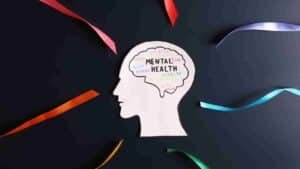
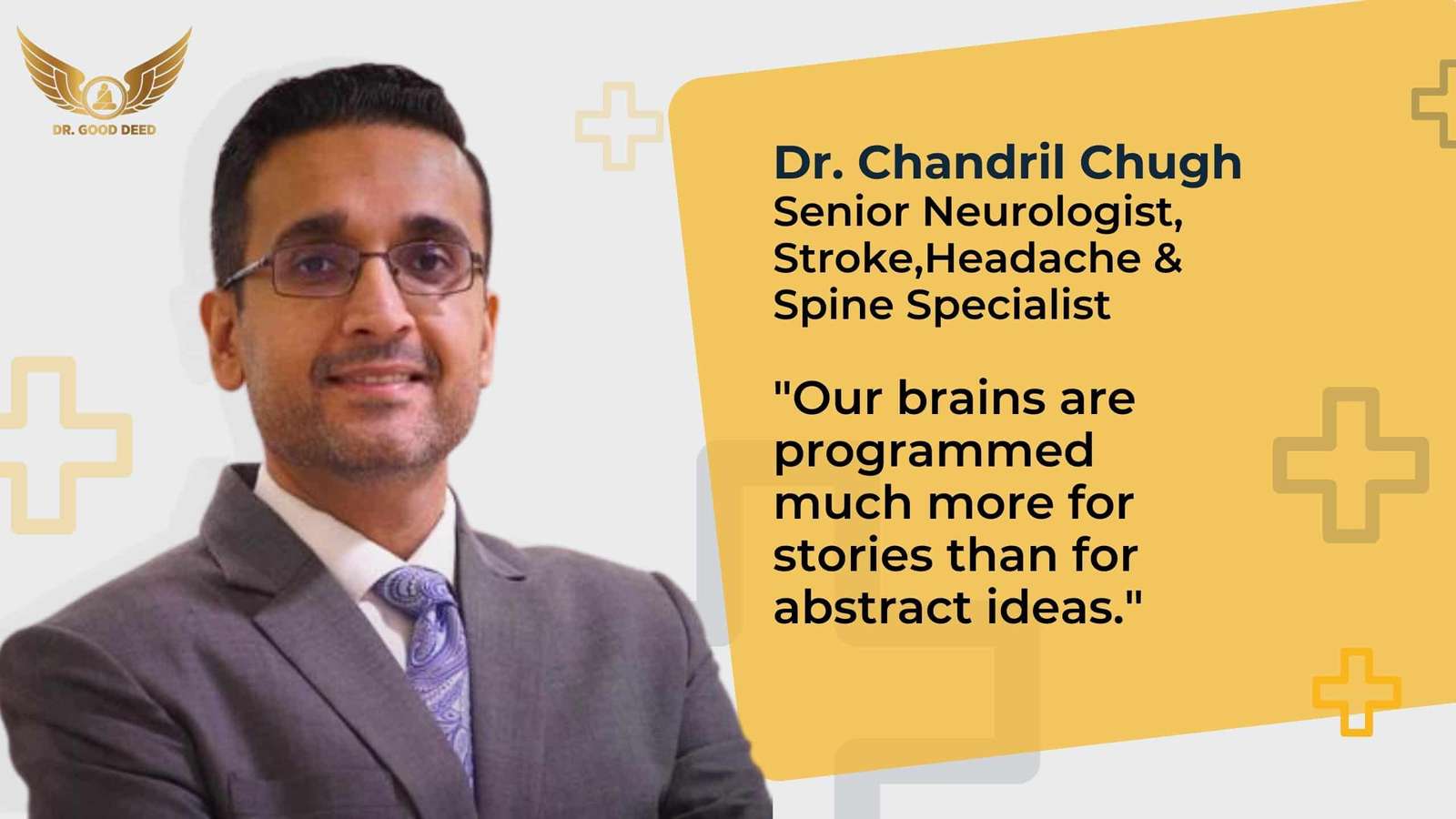




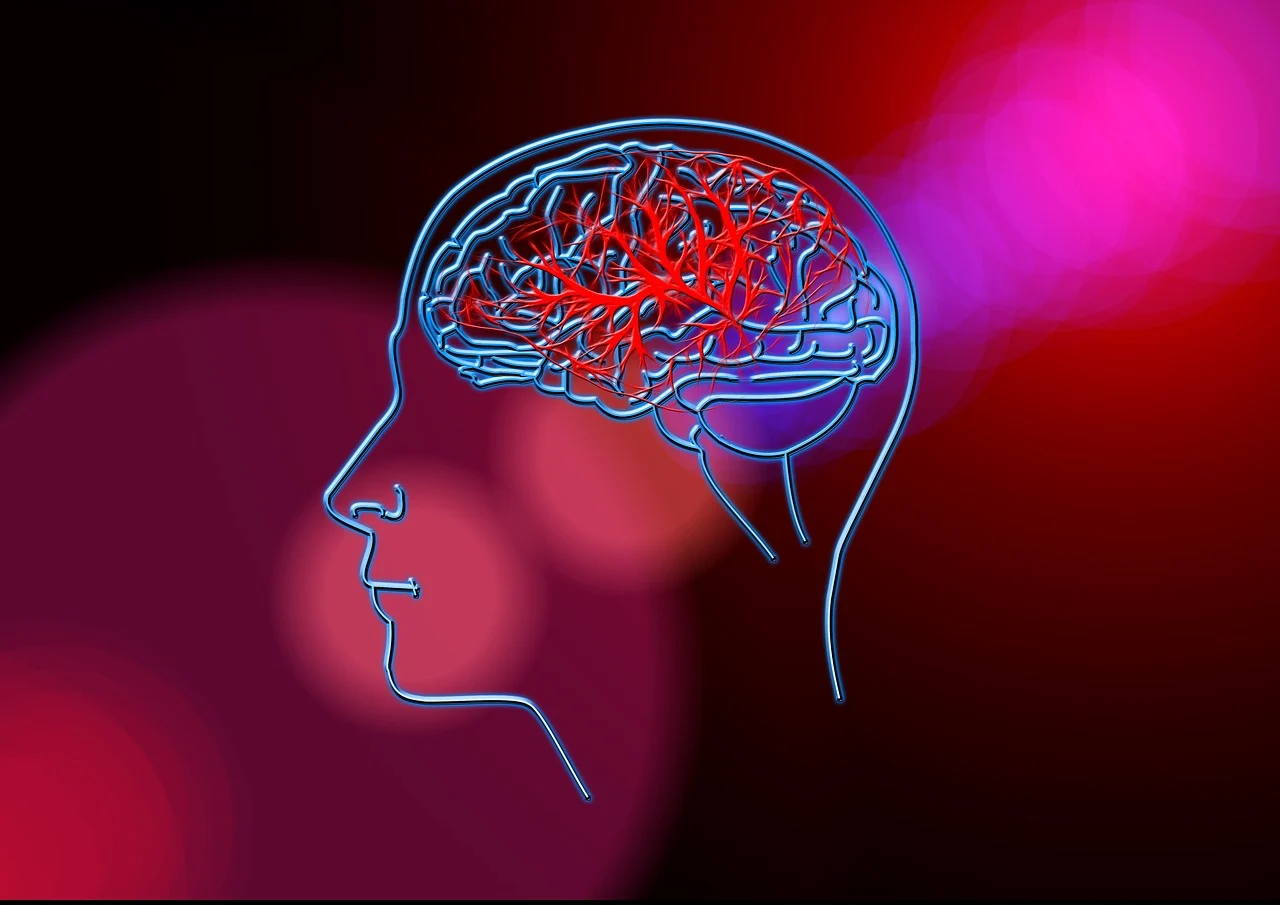
 Causes of stroke among women
Causes of stroke among women